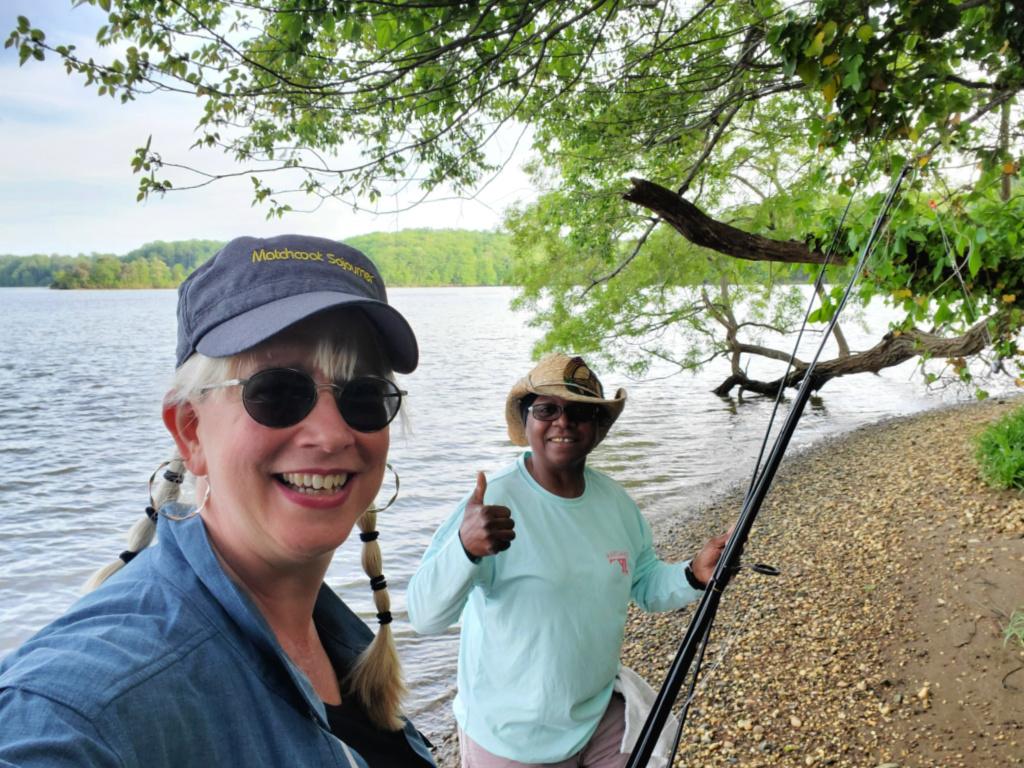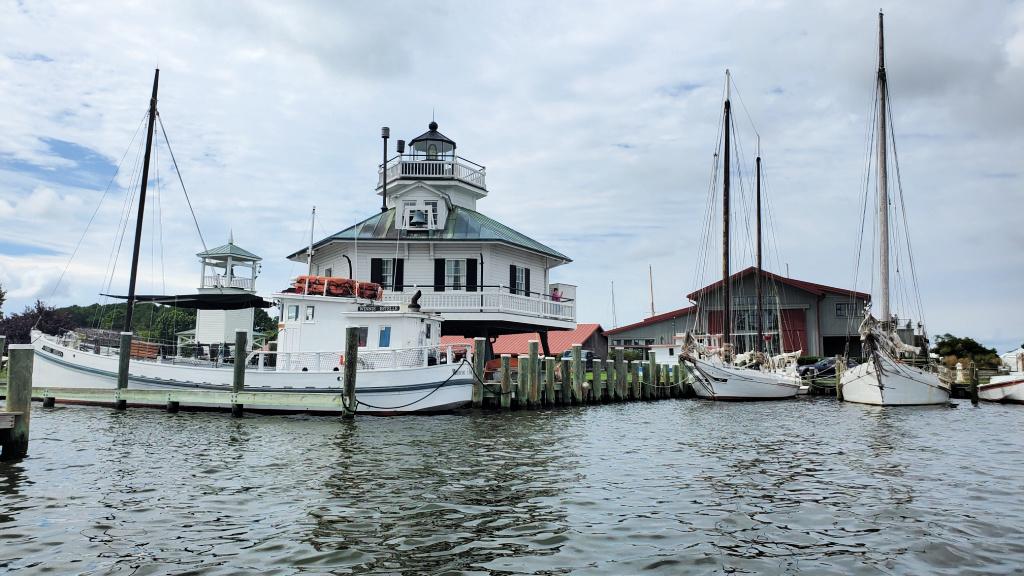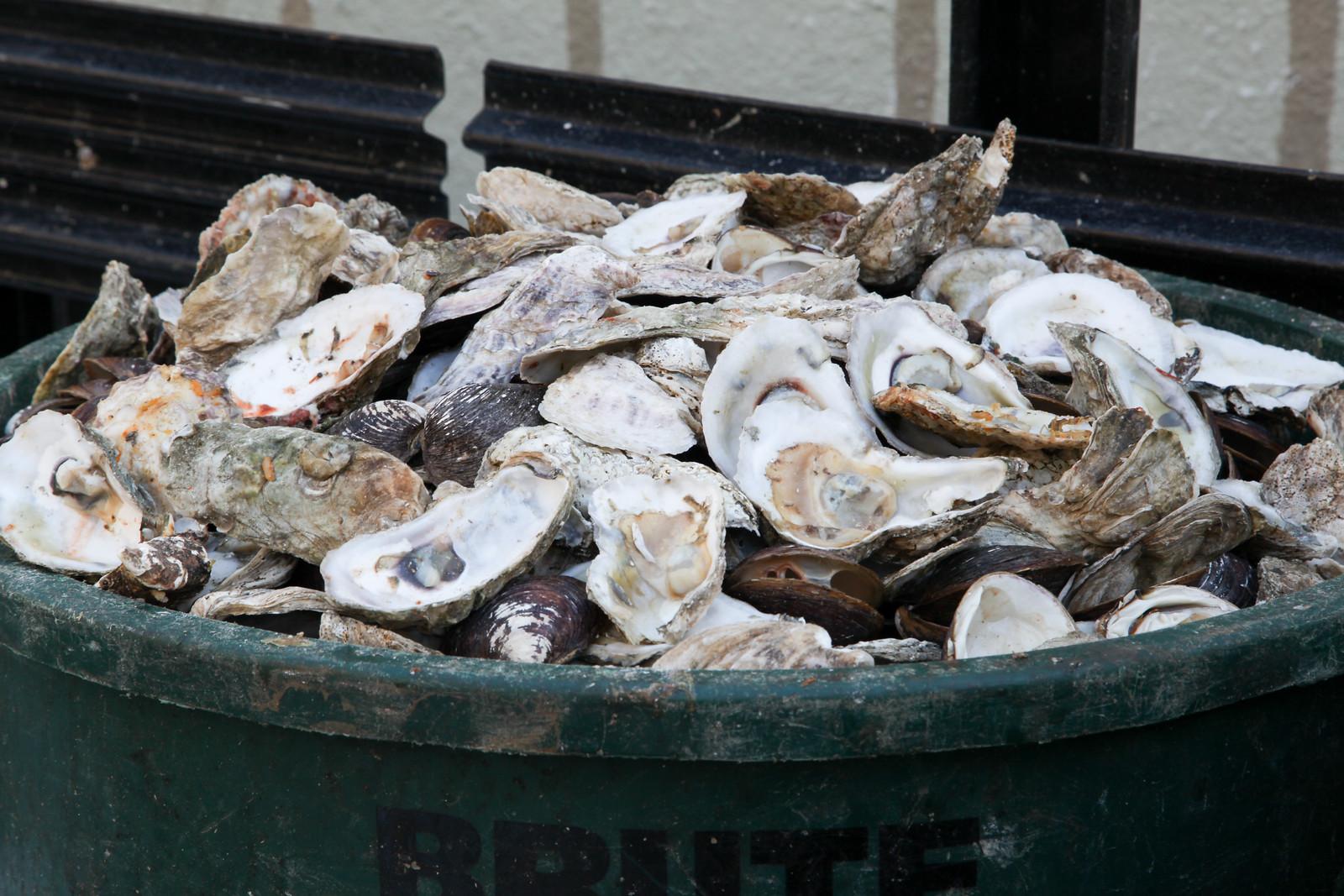
Jennifer Trice (l) and Patty Lake of Matchcoat Sojourner
Sharing Stories of the Chesapeake
The National Park Service has partnered on a new program that celebrates authentic traditions and experiences in this historic watershed.
By Kim O’Connell
It’s an early October morning on the Eastern Shore of the Chesapeake Bay in Maryland. In their highest branches, trees are just beginning their seasonal flashes of red and gold. Scuttling underwater in search of food, countless blue crabs have grown large and fat. Above the surface, Patty Lake and Jennifer Trice cast their fishing lines. As they do, they share stories with a small group about the food and culture of this historic watershed, which has been part of their families’ lives for generations, and how living and working along the bay has shaped them.
Lake and Trice are the owners of Matchcoat Sojourner, a Maryland-based heritage travel company that leads group tours—so-called “hook and cook” experiences—that are tied to the foodways of the Chesapeake Bay, historically one of the most abundant and ecologically significant waterways in the United States. After a successful morning fishing trip, the women teach group members how to fillet the fish they caught—to wield the knife at just the right angle to separate meat from bone and then fry it up to a perfect, flaky doneness. As they eat the fish and sip wine from Crow Vineyard, an operation run by longtime Eastern Shore farmers, the group continues to share stories of living, working, and recreating in this vital watershed.
“There’s this vulnerability that happens with people sharing food and sharing the stories, this reciprocity,” Trice says. "Matchcoat Sojourner offers a platform, usually at the table, that gives a voice to those often overlooked in tourism: the working, living history, their heritage, skills and stories—the 'authentic now' of an area."
The women are just two of the dozens of people who have been certified as part of the Chesapeake Storytellers Program, a joint venture between the National Park Service and the Maryland Department of Commerce’s Office of Tourism. The idea is to connect visitors who are seeking authentic Chesapeake experiences with locals whose livelihoods depend on the bay, either on land or water.
The Storytellers program provides training and certifies tour guides as authorities in whatever their area of expertise is—whether that’s crabbing and fishing, history, hospitality, boat-building, and more.
“Together with the Maryland Office of Tourism, we developed this idea and concept of training water tour operators to be ambassadors of the bay, so they could learn some of the techniques that traditional NPS rangers use in storytelling,” says Wendy O’Sullivan, superintendent of the NPS Chesapeake office, which partners with state and nonprofit groups, such as the Chesapeake Conservancy, to promote conservation and tourism opportunities throughout the watershed.
A primary goal, O’Sullivan says, is to build a growing sense of stewardship of the bay among residents and visitors through increased connections and more authentic, meaningful experiences.
“We brought in experts, [such as] a session on the ecology of the bay, a session on interpreting stories,” O’Sullivan says. “At the end of each training, the participants developed and presented their talk in front of the group and got feedback and input from the participants and experts. So it was a training not just to listen and learn, but in doing.”
The largest estuary in North America at nearly 200 miles long, and containing some 18 trillion gallons of water, the Chesapeake Bay boasts immense ecological and economic value. According to the Chesapeake Bay Program’s latest numbers, the bay is home to an estimated 282 million blue crabs, its most iconic symbol. It supports nearly 350 species of finfish and 173 species of shellfish, according to the Chesapeake Bay Foundation (CBF), including striped bass, Atlantic menhaden, drum, mackerel, bay scallops, knobbed whelk, and hard clams. Some 500 million pounds of seafood are pulled from the bay each year and brought to market.
With a history of ecological "dead zones," in which pollutants deoxygenate the water and literally suffocate estuarine life, the bay is a source of ongoing environmental concern. According to the Maryland Department of Natural Resources, the number of oysters less than a year old is the sixth-lowest recorded since 1999, at about 275 million. “[O]ysters in the bay are at perilously low levels compared to historic populations,” said CBF’s Maryland Fisheries Scientist Allison Colden in an online statement. “The state must carefully balance the economic desire to harvest more oysters with the environmental benefit that oysters provide thanks to their natural ability to filter water and create habitat.”
The big picture for blue crabs—a keystone species for the Chesapeake—is complex. Overall, the blue crab population plummeted 30 percent from 2020 to 2021, but the population of adult females, considered the best indicator of species health, increased in that time to within the range that is considered healthy. Still, conservationists are vigilant about ongoing threats from pollutants and warming water associated with climate change. On a positive note, ecologists have reported that the bay's hypoxic "dead zone" has been shrinking due to successful conservation efforts.
The bay also contains numerous cultural and historic sites, including those related to Indigenous peoples, free and enslaved Blacks, and watermen and women whose livelihoods depend on a healthy waterway. This waterway includes several national park units, including the Captain John Smith Chesapeake National Historic Trail, the Werowocomoco village site, Fort Monroe National Monument, and Harriet Tubman Underground Railroad National Historical Park.
Some are concerned that the traditional folkways and foodways of the bay are at risk, as climate change and pollution threaten natural resources on which the region sorely depends. Losing land at a rate of more than 8 acres per year, the bay’s iconic, 740-acre Tangier Island, whose residents speak in a distinctive British-English dialect, may succumb to rising sea levels within five decades. “The land loss is just unreal,” a Tangier resident told Earl Swift, author of the book Chesapeake Requiem.
Charges of over-harvesting of resources such as the bay’s iconic oysters have sometimes pitted watermen and women against conservation officials. Efforts like the Storytellers program are aimed at boosting bay economies and also fostering partnerships between museum and park managers and the people who’ve worked the bay for decades. These include Captain Rachel Dean of Solomons Islands Heritage Tours and Captain Thad Kubis of Shardana Sailing Charters, and sites like the Chesapeake Bay Maritime Museum in historic St. Michaels, Maryland, incorporated in 1804.

The 1879 Hooper Strait Lighthouse, a focal point of the Chesapeake Maritime Museum in St. Michaels, Maryland. / Kim O'Connell
“We need the tourism,” Trice says. “We want to share our story. We have so many [traditional] skillsets that are being lost.”
A movement has been building in recent years to create a Chesapeake Bay National Recreation Area (CNRA) as a way of pulling together various sites under one umbrella and give elevated attention to the bay’s unique resources. Earlier this year, U.S. Senator Chris Van Hollen and Congressman John Sarbanes, both of Maryland, convened more than 30 regional organizations as a working group to continue exploring the creation of the national recreation area.
“NPS is looking for ways to elevate the sites all around the bay, to lift up the visitor experience, to link together all these places,” O’Sullivan says. “If a recreation area happened, we’d be well-positioned to fold those sites into the CNRA. The long-held vision for a national park for the Chesapeake has revolved around an analogy of a string of pearls, unlike other places where it’s a single place with a boundary around it.”
The concept would build on the partnerships already in place, O’Sullivan explains. “It’s not just the bay itself but these places dotted around the bay that provide a portion of the story and that makes the Chesapeake authentic,” she says. “Once strung together under an NPS construct of storytelling, access, marketing, and programming, that’s what would make it knit together as a national park.”
The Storytellers program is another way to make those connections, for visitors and locals alike. “It was a lovely program for Patty and me because we got to meet other people who do what we do professionally,” Trice says. “A lot of our families have been here since the 1600s. Our family stories are often very divergent from what popular culture has out there. We’re so happy for a platform.”

A haul of Chesapeake oysters. / Chesapeake Bay Program

Add comment